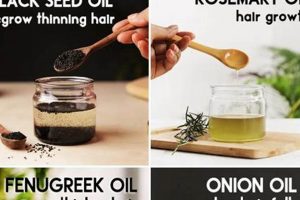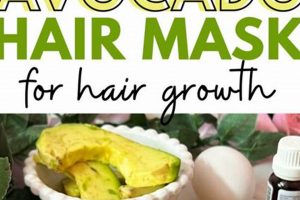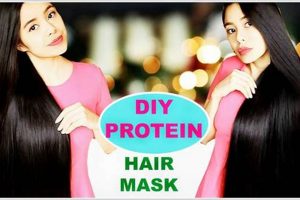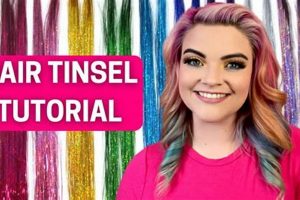Creating whimsical, gravity-defying hairstyles inspired by troll dolls through do-it-yourself methods involves various techniques and materials. These projects often utilize bright, artificial hair fibers or yarn, secured to a base such as a headband or wig cap. The objective is to replicate the iconic, upright hairstyle associated with the popular toy figures. For example, individuals may use a hot glue gun to attach colorful yarn strands to a cone-shaped form, resulting in a wearable headpiece.
This form of creative expression provides an avenue for personal customization and artistic exploration. It offers an engaging activity for crafting enthusiasts and provides a unique option for costume design or themed events. The resurgence of interest in retro aesthetics has contributed to the appeal of such projects, connecting current trends with nostalgic references. Moreover, the accessibility of materials and the adaptable nature of the construction process make it an attainable craft for diverse skill levels.
The following sections will delve into specific techniques for replicating these distinctive hairstyles, examining material choices, structural considerations, and methods for achieving desired visual effects. Guidance will be provided on securing the hair elements, shaping the overall form, and customizing the design to individual preferences. The article will also explore safety precautions and offer tips for troubleshooting common issues encountered during the creation process.
Essential Considerations for Troll-Inspired Hair Creations
The following guidelines provide a foundation for constructing robust and visually appealing troll-inspired hairstyles. These recommendations address material selection, construction techniques, and safety protocols for optimal results.
Tip 1: Secure Foundation. A stable base, such as a durable headband or a well-constructed wig cap, is critical for supporting the weight and structure of the hair elements. Employ high-strength adhesives or sewing techniques to firmly attach the hair to the base.
Tip 2: Material Selection. Opt for synthetic hair fibers or yarn that retain their shape and exhibit vibrant color. Consider the texture and weight of the material to ensure the final product is both aesthetically pleasing and manageable.
Tip 3: Structural Integrity. Internal support structures, such as wire frames or foam cones, can provide stability and prevent the hairstyle from collapsing. Integrate these supports seamlessly into the design to maintain a polished appearance.
Tip 4: Adhesive Application. Exercise caution when using hot glue or other adhesives. Apply glue in a well-ventilated area and avoid direct contact with skin. Allow sufficient drying time for secure bonding.
Tip 5: Color Palette. Carefully select a color palette that aligns with the desired aesthetic. Consider contrasting or complementary colors to enhance visual interest and create a dynamic effect.
Tip 6: Secure Attachment. Reinforce the attachment of individual hair strands or yarn bundles to prevent shedding or detachment. Utilize multiple layers of adhesive or employ knotting techniques for enhanced durability.
Tip 7: Finishing Touches. Incorporate decorative elements, such as glitter, beads, or ribbons, to personalize the design. Ensure these embellishments are securely attached and do not compromise the overall stability of the hairstyle.
Adherence to these guidelines will contribute to the creation of high-quality, visually striking troll-inspired hair creations. The emphasis on structural integrity, material selection, and safe handling practices is crucial for achieving optimal outcomes.
The subsequent sections of this article will provide detailed instructions for implementing these recommendations, including step-by-step tutorials and visual aids.
1. Vibrant Fiber Selection
Vibrant fiber selection represents a critical element in achieving the desired aesthetic of a do-it-yourself troll-inspired hairstyle. The inherent visual impact of these hairstyles is directly linked to the quality and chromatic intensity of the fibers employed.
- Hue Saturation and Impact
The degree of color saturation significantly affects the overall impact of the hairstyle. Highly saturated fibers, characterized by intense and pure colors, emulate the iconic look of original troll dolls. Conversely, muted or pastel shades may offer a softer, alternative aesthetic. Experimentation with color combinations is encouraged to realize unique and visually arresting outcomes.
- Fiber Texture and Light Reflection
The texture of the chosen fibers influences light reflection and visual depth. Smooth, glossy fibers exhibit a higher degree of reflectivity, contributing to a vibrant and eye-catching appearance. Conversely, matte or textured fibers absorb more light, resulting in a more subdued effect. Fiber texture should complement the intended design and overall aesthetic.
- Material Composition and Durability
Synthetic fibers, such as acrylic or nylon, are commonly used due to their availability, vibrant color retention, and relative durability. These materials withstand manipulation and maintain their color intensity over time. Natural fibers may be used, but their color range is often more limited, and they may require specialized dyeing techniques to achieve the desired vibrancy.
- Colorfastness and Longevity
Colorfastness refers to the fiber’s ability to retain its color intensity after exposure to light, washing, or other environmental factors. Selecting fibers with high colorfastness ensures the longevity of the hairstyle’s vibrant appearance. UV-resistant fibers are particularly suitable for projects intended for outdoor use or prolonged sun exposure.
The selection of vibrant fibers is paramount in replicating the distinctive aesthetic of troll-inspired hairstyles. Thoughtful consideration of hue, texture, material composition, and colorfastness will contribute to the creation of visually striking and durable do-it-yourself projects.
2. Secure Base Attachment
Secure base attachment forms a foundational element within do-it-yourself troll hair projects. Its importance stems from the direct causal relationship between a stable base and the overall structural integrity of the completed hairstyle. Without secure attachment, the artificial hair fibers, often voluminous and gravity-defying, are prone to detachment, rendering the project visually incomplete and structurally unsound. Consider, for instance, a yarn-based troll hairpiece designed for a costume. Inadequate adhesion between the yarn and the headband base results in shedding, compromising the aesthetic and potentially causing inconvenience to the wearer. Therefore, secure base attachment is not merely a procedural step but a determinant of the final product’s success.
Further, various attachment methods exist, each with its inherent strengths and weaknesses. Hot glue, while offering rapid adhesion, may lack long-term durability, particularly under stress or temperature fluctuations. Sewing, conversely, provides a more robust and permanent bond but requires specialized tools and skills. The selection of an appropriate attachment method hinges on factors such as the base material, the weight of the hair fibers, and the intended use of the finished piece. For example, a lightweight fiber attached to a fabric-covered headband might suffice with hot glue, whereas a heavier fiber secured to a plastic base may necessitate the added reinforcement of stitching. Demonstrably, the choice of secure base attachment method needs careful evaluation.
In summary, secure base attachment in do-it-yourself troll hair creation is essential. Challenges include selecting the appropriate adhesive or sewing technique for given materials and considering the long-term durability needs of the project. Recognizing the interdependence between a solid base and the overall success of the hairstyle facilitates durable, aesthetically pleasing outcomes, integral to the overarching goal of the do-it-yourself troll hair activity.
3. Upright Structure Support
Upright structure support is intrinsically linked to the successful execution of do-it-yourself troll hair projects. The defining characteristic of the troll doll aesthetic is the hair’s vertical orientation, defying gravity to create a whimsical effect. Consequently, the absence of adequate support mechanisms invariably results in a collapsed or misshapen hairstyle, failing to capture the intended visual appeal. The cause-and-effect relationship is direct: insufficient support leads to structural failure, undermining the entire project. For instance, a DIY troll hair creation using only yarn attached to a headband, without internal bracing, will likely droop or fold over, deviating significantly from the desired upright form.
The importance of upright structure support extends beyond mere aesthetics. A well-supported structure enhances the longevity and durability of the hairstyle. Internal supports, such as wire frameworks or strategically placed foam inserts, distribute the weight of the hair fibers, preventing stress on the adhesive bonds and minimizing the risk of detachment. Consider a complex troll hair design incorporating multiple colors and embellishments. Without a robust internal structure, the added weight of these elements places undue strain on the base attachment, leading to potential failure. Understanding these practical implications allows for informed decision-making in material selection and construction techniques, thereby mitigating potential structural weaknesses.
In summary, upright structure support is not a peripheral concern but a central determinant of success in do-it-yourself troll hair creations. Challenges in achieving optimal support involve balancing structural integrity with aesthetic considerations, ensuring that support mechanisms remain discreet and do not detract from the overall visual appeal. Linking this concept to the broader theme of creative expression, effective upright structure support enables the realization of ambitious and elaborate troll hair designs, pushing the boundaries of DIY crafting possibilities.
4. Adhesive Safety Protocols
The utilization of adhesives in “troll hair diy” projects necessitates adherence to rigorous safety protocols. The bond strength required to maintain the structural integrity of these often complex and gravity-defying hairstyles frequently necessitates the use of industrial or craft-grade adhesives, many of which present potential health hazards if mishandled. Skin contact, inhalation of fumes, and accidental ingestion pose distinct risks. For instance, cyanoacrylate adhesives (“super glue”), commonly employed for their rapid bonding capabilities, can cause immediate skin and eye irritation. Prolonged or repeated exposure to fumes from solvent-based adhesives, often used for their durability, can result in respiratory problems and neurological effects. Therefore, the implementation of comprehensive safety measures is not merely a recommendation but a prerequisite for responsible participation in this craft.
Further, a practical understanding of adhesive properties and appropriate application techniques is crucial in mitigating these risks. Proper ventilation minimizes the concentration of airborne fumes, reducing the likelihood of respiratory irritation. The use of protective equipment, such as gloves and eye protection, prevents direct contact with adhesives, minimizing the potential for skin and eye damage. Substituting high-toxicity adhesives with safer alternatives, such as low-VOC (volatile organic compound) or water-based adhesives, can significantly reduce the overall risk profile. Consider the scenario of a child participating in a “troll hair diy” activity; the use of non-toxic, washable glue sticks not only reduces the risk of accidental ingestion or skin irritation but also promotes a safer and more enjoyable crafting experience. The integration of safety considerations into every stage of the project, from material selection to application, is demonstrably essential.
In summary, adhesive safety protocols are inextricably linked to “troll hair diy” projects. The challenges lie in balancing the need for strong, durable bonds with the imperative to minimize potential health risks. Linking this understanding to the broader theme of responsible crafting, a commitment to safety empowers individuals to engage in “troll hair diy” with confidence, ensuring that creative expression does not compromise personal well-being. Furthermore, educational initiatives promoting safe adhesive handling practices are crucial in fostering a culture of responsible crafting within the DIY community.
5. Creative Embellishment Options
Creative embellishment options exert a significant influence on the aesthetic outcome of do-it-yourself troll hair projects. The incorporation of decorative elements transforms a basic hairstyle into a personalized artistic expression, amplifying the visual impact and reinforcing the whimsical nature inherent in the troll doll aesthetic. The cause-and-effect relationship is direct: the judicious selection and application of embellishments lead to a more visually stimulating and individualized final product. For instance, the addition of glitter to synthetic hair fibers enhances their reflectivity, creating a sparkling effect that emulates the playful spirit of troll dolls. Similarly, the integration of beads, sequins, or miniature charms introduces textural complexity and adds layers of visual interest. Therefore, embellishment is not merely an optional addendum but an integral component of successful troll hair creation.
Further considerations involve the careful calibration of embellishment density and thematic coherence. Overly dense embellishments can overwhelm the overall design, obscuring the underlying structure and diminishing the intended effect. Conversely, sparse or mismatched embellishments can appear haphazard and detract from the visual harmony. The selection of embellishments should complement the base hair color, texture, and overall design concept. Consider a troll hair creation intended for a festive occasion. The incorporation of themed embellishments, such as miniature ornaments for a holiday celebration or flower appliques for a spring festival, reinforces the intended theme and enhances the visual narrative. Demonstrably, embellishment choices should be driven by a cohesive design vision.
In summary, creative embellishment options are inextricably linked to the success of do-it-yourself troll hair projects. The challenge lies in striking a balance between artistic expression and design coherence, ensuring that embellishments enhance rather than detract from the overall aesthetic. Linking this understanding to the broader theme of personalized crafting, thoughtful embellishment empowers individuals to create unique and visually compelling troll hair creations that reflect their individual style and artistic sensibilities. Moreover, continuous exploration of novel embellishment techniques and materials further expands the creative possibilities within the realm of DIY troll hair design.
Frequently Asked Questions
The following addresses commonly encountered inquiries pertaining to the construction and maintenance of troll-inspired hairstyles. The information provided aims to clarify prevailing misconceptions and offer practical guidance.
Question 1: What is the optimal method for preventing shedding of artificial hair fibers in a DIY troll hair project?
Fiber shedding can be mitigated through several techniques. Initial fiber selection should prioritize materials known for their low shedding propensity. Application of a sealant, such as hairspray or a specialized fabric sealant, to the base of the fiber attachment can further reduce shedding. Securing the fibers with multiple layers of adhesive or stitching, where appropriate, provides an additional layer of protection. Periodic maintenance, involving gentle combing or brushing, can remove loose fibers before they detach completely.
Question 2: Are there specific adhesives recommended for securing hair fibers to a plastic headband in “troll hair diy,” and what safety precautions should be observed?
Cyanoacrylate adhesives (super glue) and epoxy resins are frequently used for bonding hair fibers to plastic headbands due to their strong adhesive properties. However, both materials require strict adherence to safety protocols. Adequate ventilation is essential to minimize inhalation of fumes. Protective gloves and eye protection should be worn to prevent skin and eye contact. In the event of skin contact, immediate washing with soap and water is recommended. Eye contact necessitates immediate irrigation with copious amounts of water and prompt medical attention.
Question 3: How can a stable, upright structure be achieved in a troll hair creation, particularly when using heavy or voluminous hair fibers?
Achieving a stable, upright structure necessitates the incorporation of internal support mechanisms. Wire armatures, shaped to the desired hairstyle form, provide rigid support. Alternatively, lightweight foam cones or cylinders can be used as a base structure. The hair fibers are then attached to this supporting framework, distributing the weight and preventing collapse. The choice of support material depends on the complexity and scale of the hairstyle, as well as the weight and volume of the hair fibers.
Question 4: What types of embellishments are suitable for decorating troll-inspired hairstyles, and how can they be securely attached?
A wide array of embellishments can be incorporated, including glitter, beads, sequins, ribbons, and miniature charms. The selection of embellishments should complement the overall aesthetic and theme of the hairstyle. Secure attachment can be achieved through various methods, including hot glue, fabric glue, sewing, or wire attachment. The choice of attachment method depends on the size and weight of the embellishment, as well as the material to which it is being attached. For heavier embellishments, a combination of adhesive and mechanical attachment (e.g., sewing) is recommended.
Question 5: Is it feasible to create “troll hair diy” creations that are washable or resistant to moisture damage?
While complete washability may be challenging to achieve, steps can be taken to enhance moisture resistance. Selecting synthetic hair fibers known for their water resistance is a primary consideration. Applying a water-resistant sealant to the finished hairstyle can provide additional protection. However, immersion in water should be avoided. Spot cleaning with a damp cloth and mild detergent is the recommended cleaning method. Thorough drying is essential to prevent mildew or mold growth.
Question 6: What are the recommended storage practices for “troll hair diy” creations to prevent damage or deformation?
Proper storage is essential to maintain the shape and integrity of troll-inspired hairstyles. Storing the hairstyle in an upright position, supported by a wig stand or similar structure, prevents deformation. Covering the hairstyle with a dust bag or protective covering minimizes exposure to dust and debris. Avoid storing the hairstyle in direct sunlight or extreme temperatures, as this can cause fading or damage to the hair fibers and embellishments.
These answers provide a foundation for successfully navigating the challenges and complexities associated with creating and maintaining troll-inspired hairstyles. A commitment to safety, material selection, and structural integrity is paramount.
The subsequent section will explore advanced techniques for achieving professional-quality results in “troll hair diy” projects.
Conclusion
This exploration of troll hair diy has highlighted essential considerations, ranging from vibrant fiber selection and secure base attachment to the critical importance of upright structure support and rigorous adhesive safety protocols. The integration of creative embellishment options allows for personalized artistic expression within this craft. The FAQ section addressed common concerns, emphasizing the need for careful material selection, structural planning, and safe handling practices.
As demonstrated, successful troll hair diy demands a comprehensive understanding of both aesthetic principles and practical construction techniques. Continued exploration of innovative materials and methods will likely further refine this craft, fostering even more elaborate and durable creations. Individuals engaging in this activity are encouraged to prioritize safety and structural integrity, ensuring both the longevity and visual appeal of their artistic endeavors.







